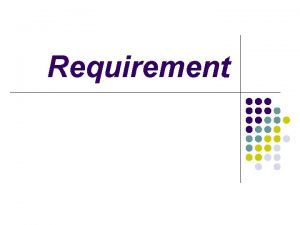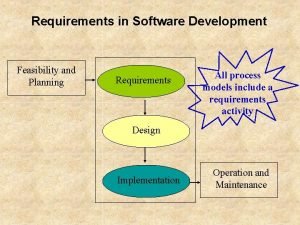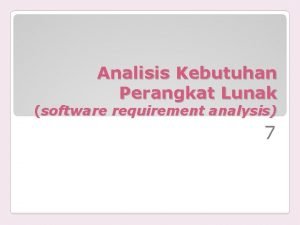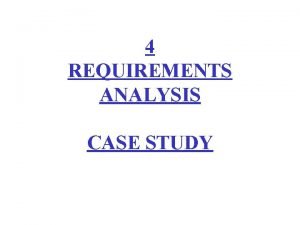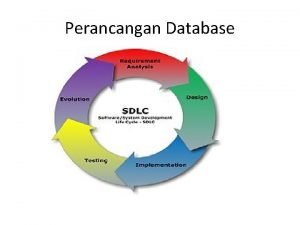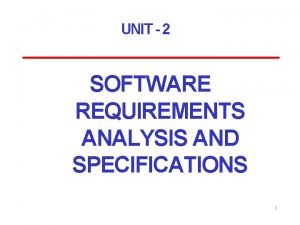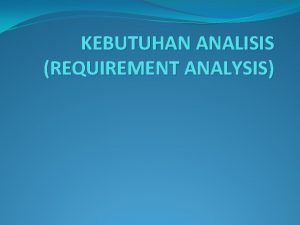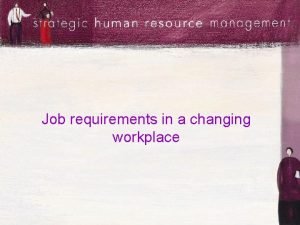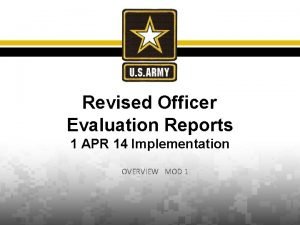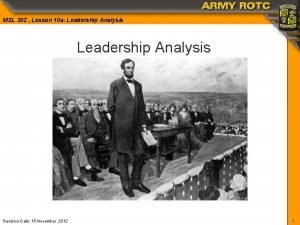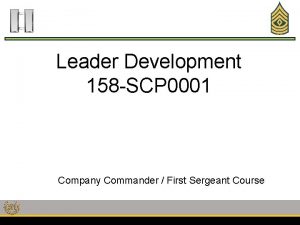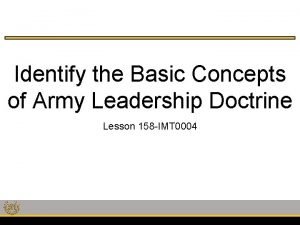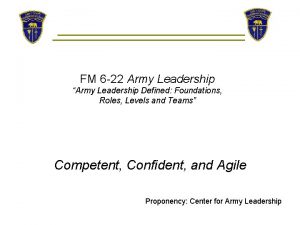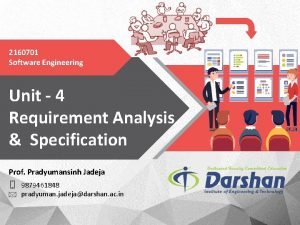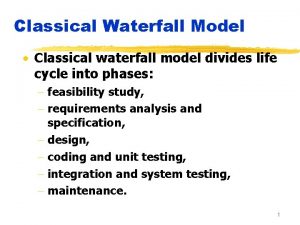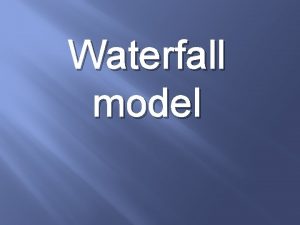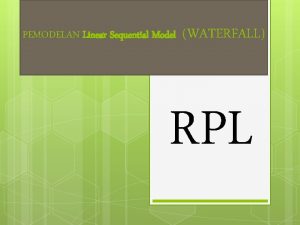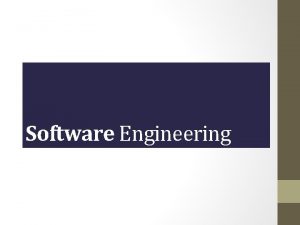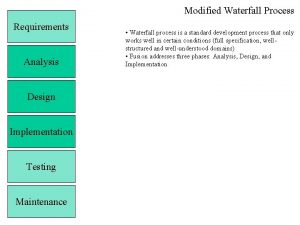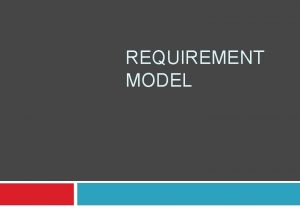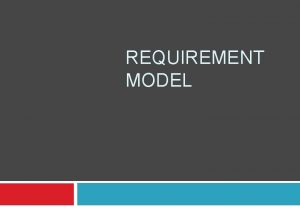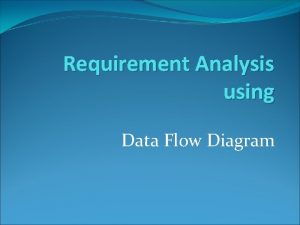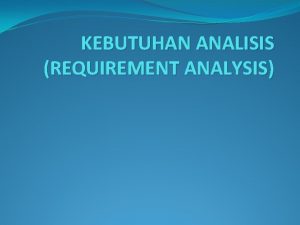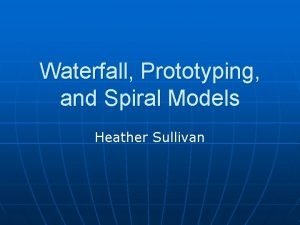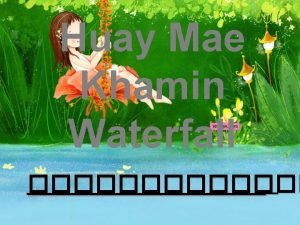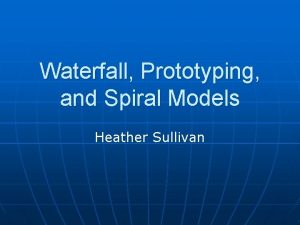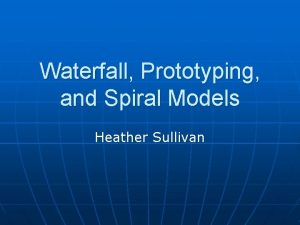Requirement Analysis Waterfall Model What is a waterfall



















- Slides: 19

Requirement Analysis

Waterfall Model � What is a waterfall? � What is a waterfall model? ◦ A short video to watch and listen



THE BASIC WATERFALL MODEL Requirements analysis Design Implementation Testing Maintenance

The Software Lifecycle

Dilbert On Requirements 7


Requirement Analysis � Requirements tell us what the system should do - not how it should do it.

Requirements Analysis Summary 10 Requirement Analysis (John Knight & Thomas Horton 2007)

GOOD REQUIREMENTS SPECIFICATION QUALITIES � Complete � Accurate � Unambiguous � Verifiable (How can you verify ”user friendliness”? ) � Consistent � Modifiable (also the requirements change) � Traceable (where has each requirement come from? )

OVERALL STRUCTURE FOR REQ. SPEC. (Ansi/IEEE Standard 830) � 1. Introduction 1. 1. Purpose 1. 2. Scope 1. 3. Definitions, Acronyms and Abbreviations 1. 4. References 1. 5. Overview 2. General Description 2. 1. Product Perspective 2. 2. Product Functions 2. 3. User Characteristics 2. 4. General Constraints 2. 5. Assumptions and Dependencies 3. Specific Requirements

ANSI/IEEE: Specific requirements � 3. Specific requirements 3. 1. Functional Requirements 3. 2. External Interface Requirements 3. 3. Performance Requirements 3. 4 Design Constraints 3. 4. 1. Standards Compliance 3. 4. 2. Hardware Limitations … 3. 5. Attributes 3. 5. 1. Security 3. 5. 2. Maintainability … 3. 6. Other Requirements 3. 6. 1. Data Base …

ANSI/IEEE: FUNCTIONAL REQUIREMENTS � 3. 1. Functional Requirements 3. 1. 1. Functional Requirement 1 3. 1. 1. 1 Introduction 3. 1. 1. 2 Inputs 3. 1. 1. 3 Processing 3. 1. 1. 4 Outputs 3. 1. 2 Functional Requirement 2 … 3. 1. n Functional Requirement n

TECHNIQUES FOR GETTING THE REQUIREMENTS FROM USERS � Asking - Interview - Questionnaire - ”Brainstorming” sessions � Analysing an existing system - We must understand how the new system will differ from any old such system � Analysing the environment - e. g. process analysis � Prototyping - Gives best feedback and more formal specifications but can be expensive

REQUIREMENTS ANALYSIS - What can go wrong? � Missing specifications - Happens often - Experience helps - Sometimes it is impossible to notice � Contradictions - Do not document the same thing many times - Integrate different users’ views with the users � Noise - Do not include material which does not contain relevant information

REQUIREMENT SPECIFICATION What can go wrong? (2) � Documenting a solution rather than the problem - If the users know some information technology, they want to start solving the problem as they express it. - Many formal (also graphical) methods tend to direct the process into this. � Unrealistic requirements - Although we model the problem rather than the solution, it is good to have some idea of what is possible.

Dictation for Relaxation � Lion King 1 � Lion King 2 � Lion King 3

Finally Remember: ---No job is finished till the paperwork is done!
 Contoh user requirement dan system requirement
Contoh user requirement dan system requirement Requirement analysis diagram
Requirement analysis diagram Requirement analysis model in software engineering
Requirement analysis model in software engineering What is domain requirements
What is domain requirements Requirement analysis definition
Requirement analysis definition Requirement analysis contoh
Requirement analysis contoh Diagram studied in requirement analysis
Diagram studied in requirement analysis Database system development
Database system development Software engineering lecture notes
Software engineering lecture notes Requirement analysis steps in software engineering
Requirement analysis steps in software engineering Software requirement analysis and specification
Software requirement analysis and specification Requirement analysis adalah
Requirement analysis adalah Job analysis for a changing workplace
Job analysis for a changing workplace Field grade oer example
Field grade oer example Analysis
Analysis Scp-0001
Scp-0001 Army attributes and competencies
Army attributes and competencies Army leadership definition
Army leadership definition Analysis models in srs
Analysis models in srs Raydefinition
Raydefinition
